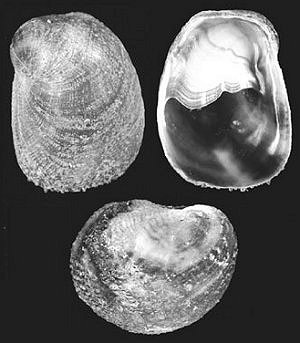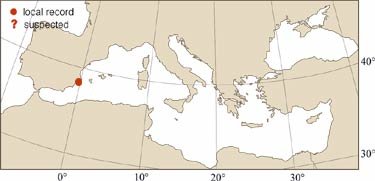
|
Relevant Synonyms
Misidentification
|
|
| photo: S. Gofas / Coll. H. Zibrowius |
|
SHORT
DESCRIPTION
color :
greyish to buff with three blurred, dark brown spiral bands, not very distinct on the outer surface, vivid inside; septum white.
common size :
20-30 mm. |
DISTINGUISHING CHARACTERISTICS
BIOLOGY / ECOLOGY
habitat :
on rock substrates in shallow water. |
|
1st
Mediterranean record
|

|
|
DISTRIBUTION
|
ESTABLISHMENT SUCCESS
speculated reasons for success :
|
|
|
MODE OF
INTRODUCTION |
IMPORTANCE TO
HUMANS |
|
KEY
REFERENCES
|
|
|
 Crepidula calyptraeiformis Deshayes, 1830
Crepidula calyptraeiformis Deshayes, 1830